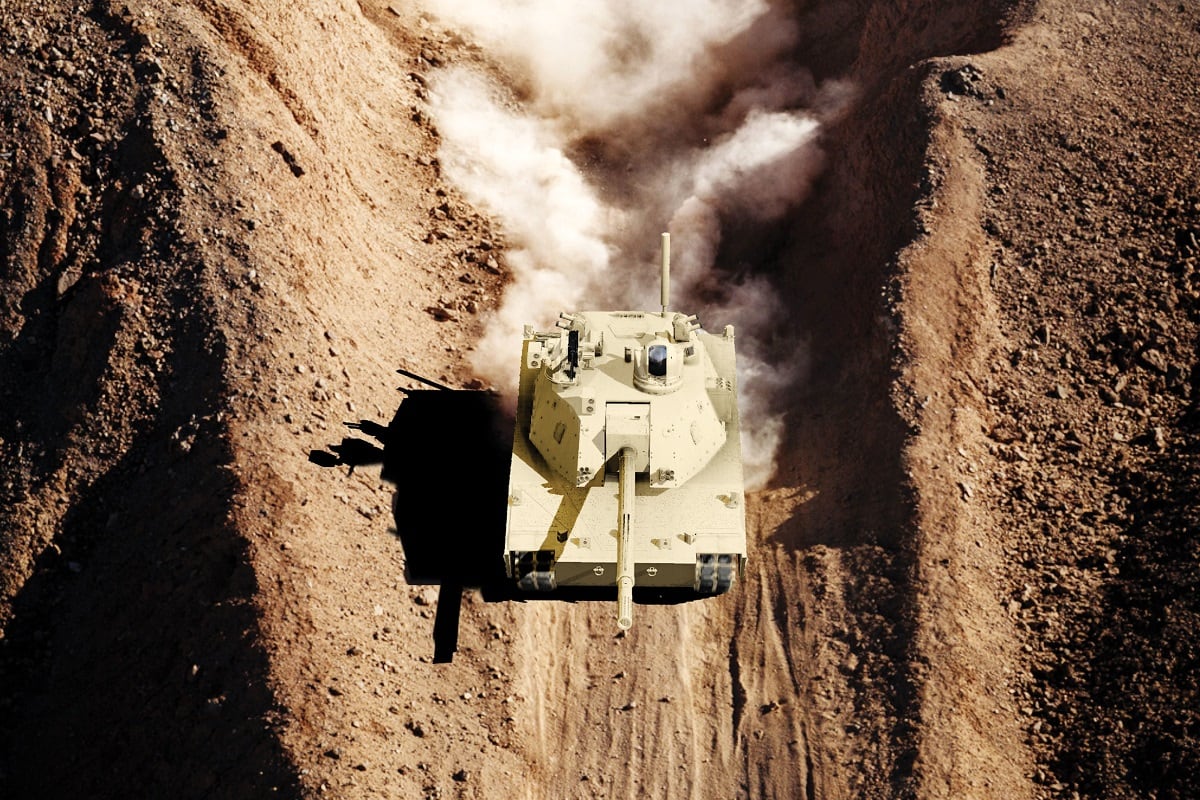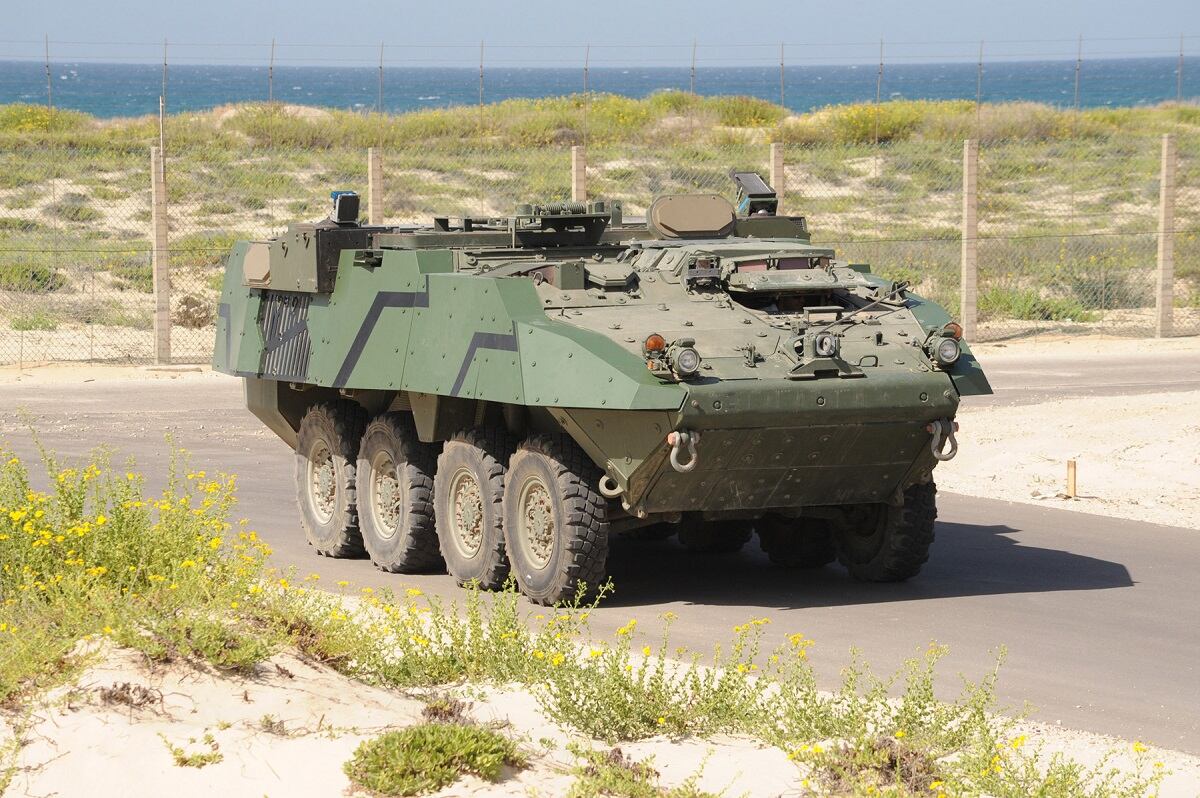PARIS — The U.S. Army has honed in on six modernization priorities, none of which can afford to linger in a sluggish acquisition process as threats grow in sophistication and the battlefield grows more complex, which has piqued the interest of many foreign companies, who are banking on having an increased chance at playing in the U.S. market due to the pace at which the Army wants to prototype and procure capabilities.
At European defense conference Eurosatory, several companies unveiled not just paper or miniature model concepts but actual capabilities targeting the top two priorities: The Next-Generation Combat Vehicle (NGCV) and Long-Range Precision Fires (LRPF).
The Army announced last fall that it would establish a four-star command to tackle its modernization priorities in short order. They are LRPF, NGCV, Future Vertical Lift, the Network, Air-and-Missile Defense and Soldier Lethality, in that order.
And since that announcement, the service has set up cross-functional teams to focus on each priority. Many leaders of the CFTs said earlier this year that they planned to prototype capabilities within just a few years and get them into the hands of soldiers.
Next-gen combat vehicles
The U.S. Army’s first stab at building prototypes for what it intends to be an innovative, leap-ahead NGCV and its robotic wingman will be ready for soldier evaluations in fiscal 2020 with a follow-on prototypes expected in 2022 and 2024.
RELATED

Germany’s Rheinmetall Defence revealed its new Lynx KF41 infantry fighting vehicle at Eurosatory on June 12 with an eye toward the U.S. market. The company pulled out all the stops including a 10:00 a.m. champagne toast to christen the vehicle.
It’s sometimes the case, at a unveiling, for the vehicle to just be a non-functioning, life-size model to convey the concept, but Rheinmetall made it clear the vehicle being shown is real. The company has publicly available footage of the vehicle’s rigorous test campaigns.
Executives at Rheinmetall told Defense News it believes the stars could be aligned for a successful pitch of the Lynx vehicle to the U.S. Army. Due to its modular design, a few hours of work can turn the Lynx into anything from a medium tank to a battlefield ambulance.
Ben Hudson, head of the company’s vehicle systems division, hopes the feature will be an interesting proposition for the U.S. Army’s NGCV.
“We are highly interested in it, and we have been below the radar for a little for the last couple of years while we’ve delivered this,” Hudson told Defense News following the unveiling. “We don’t want to deliver a PowerPoint, we want to deliver a real vehicle, and we have shown this to some people in the U.S. Army and I think it is fair to say there is some genuine interest for the U.S. to look at this vehicle as a serious competitor for the Next-Generation Combat Vehicle.”
When asked how Rheinmetall might become involved in that collaboration, Hudson said there have been a lot of changes over the past several months as the Army’s new cross-functional team under its new Futures Command moves forward with efforts to bring an NGCV capability online.
“All I can say is the next six months for that program are going to be very interesting, and we look forward to things that may occur early next year. That’s all I can really say about that for now,” he said.
What’s still missing, however, is an official U.S. partner company that could give the bid an American face and manage domestic production. Such teaming is practically mandatory these days, and Hudson said there is no shortage of suitors.
“We’ve had significant interest from U.S. companies at Eurosatory over the last couple of days,” he said. “We’ve had a lot of people interested in partnering with us because we don’t only have a concept, we’ve got a real vehicle and turret for the program.”
Israeli company Rafael didn’t have a dramatic unveiling at the show, but told Defense News that it was developing and testing a 30mm weapon station outfitted with its Trophy active protection system as an all-in-one system.
The Army is outfitting several brigades worth of Trophy APS on its Abrams tanks.
The turret can be purchase with our without the Trophy system, Rafael’s Michael L. told Defense News at the show. Michael’s last name has been withheld for security reasons.
One customer is buying more than a hundred 30mm weapon stations, he said.
RELATED

And while Rafael is envisioning the possibility of its 30mm turret and APS system being a good option for outfitting upgunned Strykers going forward, it’s also setting its sights on becoming involved in NGCV prototyping with its work in flexible turret design as well as in its long history fielding APS capability.
But not every leading tank manufacturer outside of the U.S. is clamoring to get involved in the U.S. combat vehicles market.
In the case of Germany’s Krauss-Maffei Wegmann and its French partner Nexter, executives believe the odds of selling entire vehicles to the American armed forces are dim. “We play a role in the U.S., we are selling in the U.S., but not on a system level,” KMW boss Frank Haun said during an interview at Eurosatory.
Mayer, his Nexter counterpart, added that “political reasons” and the “industry landscape” make it difficult for outsiders to break into a market tightly controlled by domestic players.
In Haun’s experience, arms sales to the U.S. have the highest chance of succeeding when there is little money at stake. “Whatever is under the radar of senators and congressmen will work,” he said.
U.S. defense contractors have significant influence in Congress thanks to traditional lobbying campaigns targeting both Democrats and Republicans. In addition, many large companies employ workers in plants across the United States, which means lawmakers from those areas are eager to ensure a continued flow of defense money to the contractors.
Long-range precision fires
The U.S. Army will demonstrate LRPF technology from a precision-strike missile to hypersonics and ramjet capabilities within the next couple of years, according to the service’s LRPF CFT.
In the near future, the service is looking at how it will evolve its current M109A7 self-propelled howitzer — or the Paladin Integrated Management — into extended-range cannon artillery. At the same time, a competition is ongoing to build a new LRPF capability that replaces and surpasses the Army Tactical Missile System (ATACMS).
Norwegian ammunition company Nammo unveiled what it’s calling an “extreme range” artillery concept using ramjet propulsion that it hopes will meet the emerging LRPF requirements for a variety of countries, including the United States.

Nammo has combined its experience in both ammunition and rocket-propulsion technology, and it’s merging those capabilities to create an artillery shell capable of reaching more than 100 kilometers in range without changing the gun on a standard 155mm howitzer, according to Thomas Danbolt, company vice president of large caliber ammunition, who spoke at Eurosatory, one of the largest land warfare conferences in Europe.
The company displayed a model of the artillery shell at the exposition and plans to test several LRPF capabilities in the coming years, particularly its new extreme-range artillery projectile.
The projectile will go through a flight demonstration in the 2019 or 2020 time frame, according to Erland Orbekk, company vice president for ramjet technology, which coincides with the Army’s LRPF CFTs tentative plans to test ramjet and hypersonics capabilities as early as 2019.
Swedish company Saab has also teamed up with Boeing to develop a Ground-Launched Small-Diameter Bomb (GLSDB) and announced at the show that the pair had demonstrated — in cooperation with the U.S. Army Aviation & Missile Research, Development and Engineering Center (AMRDEC) — its capabilities for ground forces during a test fire where the laser-enabled weapon launched and then tracked and engaged a moving target at a distance of 100 kilometers. The range ultimately will be closer to 150 kilometers.
The partnership allows for the team to easily tap the U.S. market as well as international customers interested in improving rocket artillery capability, according to Boeing’s Jon Milner, within the company’s direct attack weapons international programs division.
Milner said Boeing and Saab would continue to assess what customers want. The U.S. Army has made it clear it needs longer range artillery in order to avoid being out-gunned and out-ranged by adversaries, but also a lot of NATO countries are interested in the capability because of NATO mandates which creates a significant international market for the weapon.
Jen Judson is an award-winning journalist covering land warfare for Defense News. She has also worked for Politico and Inside Defense. She holds a Master of Science degree in journalism from Boston University and a Bachelor of Arts degree from Kenyon College.
Sebastian Sprenger is associate editor for Europe at Defense News, reporting on the state of the defense market in the region, and on U.S.-Europe cooperation and multi-national investments in defense and global security. Previously he served as managing editor for Defense News. He is based in Cologne, Germany.







